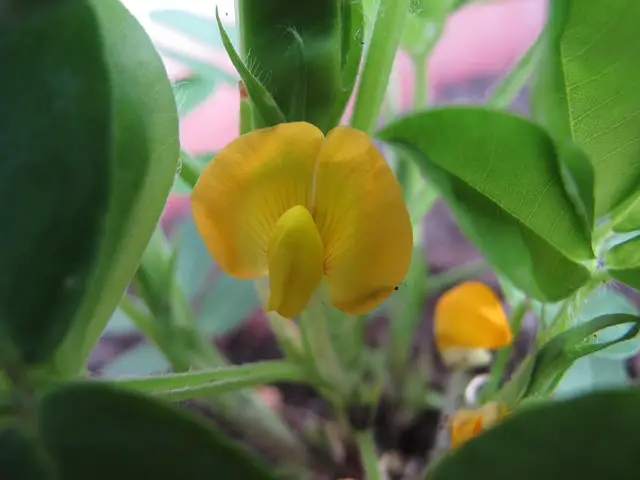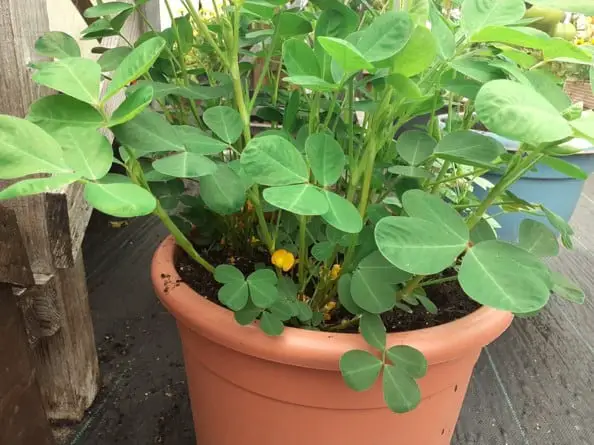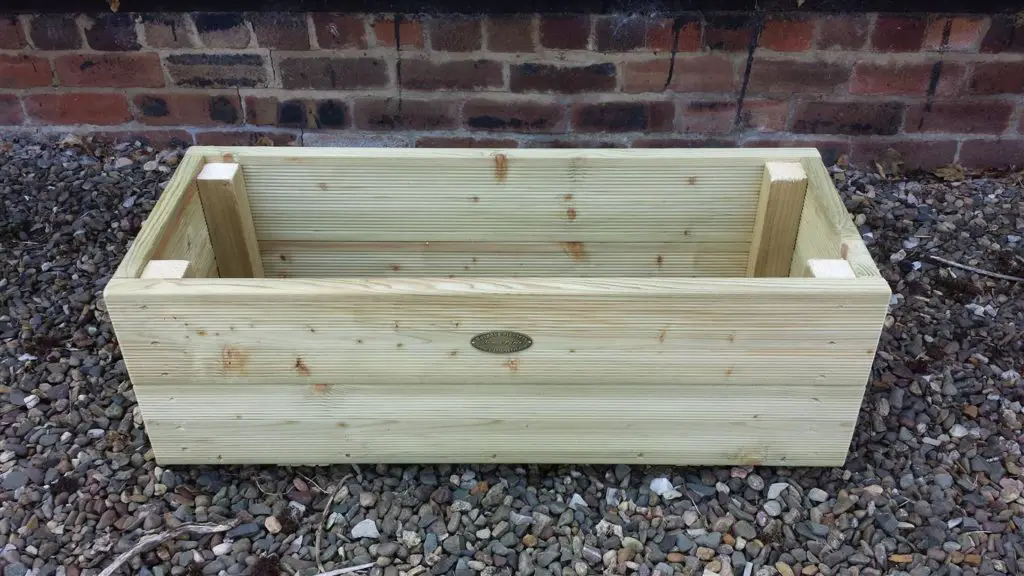Growing peanut plants (monkey nuts) is something that I would recommend any gardener to try – even if it is just for the sheer fun of it. Kids in particular love the excitement of pulling their own peanuts out of the ground – after all, how many kids get the chance to do this!
Better still, peanuts are very easy to grow if you create the right conditions, and are indeed a highly nutritious crop for any food gardener to consider. Plus they store very well and will last for a full year if you leave the outer shell on the peanuts.
5 Steps for growing peanuts
- Choose a warm place with full sunshine that will give a ground temperature of around 65F (18c) and air temperature of around 85F (29c).
- Create a growing area that consists of a free-draining loose soil mix.
- Plant the seed still in the shell (or free from the shell for faster germination), in a hole about 1-2 inch deep.
- Seed should germinate and poke free of the surface between 7-10 days after planting.
- After 40 days or so yellow flowers appear near the base of the plant. These in turn fall off and produce shoots which will reach to the ground and form the embryos we call peanuts.
The Peanut plant will grow to around 18 inches high and over a period of 4-5 months will produce around 40 pods with each pod containing 1 ‘Hull’ or ‘husk’ which is located at the end of each shoot or ‘peg’ that the flowers have produced.
As the shots emerge and sink to the ground, pull up soil around them to encourage growth. This is a process called ‘hilling up’ and is similar to the way that you ‘hill up’ potato plants that are grown in drills in a traditional row garden.

Best soil for growing peanuts
First of all it must be understood that the Peanut (Arachis hypogaea) is not categorised as a nut at all but is in fact categorised as a legume just like peas and beans.
For this reason it is widely grown commercially as a grain legume or oil crop owing to the high oil content in peanuts.
This means that just like other legumes, the peanut is not planted in a nitrogen-rich environment as it is fed with nitrogen that friendly bacteria have removed from the air in the soil, and exchange with the legume for carbohydrates. This symbiotic relationship is a unique and fascinating aspect of all legumes.
The best soil for planting peanuts therefore is a soil that is a mix of a reasonable quality topsoil with washed sand or better still, vermiculite added to create a loose, friable growing medium that is not too rich in nitrogen.
The peanut plant needs lots of water as they grow and establish their ‘nuts’ in the ground so regular watering is essential over the growing period.
How to harvest peanuts
It has been established that peanuts grow under the ground, just a few inches under the surface in fact. They do not grow on the bush itself as many mistakenly believe!
Peanuts are ready to be harvested when the plants begin to die away at the end of the season.
This is done by simply pulling up the plant and carefully digging around to collect the peanuts. This is a remarkably similar harvesting technique for lifting potatoes in fact.
Once harvested the peanuts must be placed somewhere dry and airy where the husks will dry out completely before storing. This is important as the peanuts will go mouldy if you try and store them before drying them properly.
Once dry stored the peanuts will last for up to 1 year and perhaps more, especially if you are using them to grow again and not for food.
Growing peanuts in a containers
Growing peanuts in the uk or other Northern cold climates, usually means growing them in pots or other containers as it is easier to control the soil temperature by shifting the container to a warmer spot in the garden for instance.
Another way to grow peanuts is to grow them in a polytunnel or hoop-house, where the temperature is much higher overall than outside.
The best type of container for growing a peanut plant should be a square or rectangular planter but a good sized pot will do the job. This is because the plant must have space around the base in order to grow the pegs or ‘shoots’ that it will produce to grow the peanut embryos.
The planter does not have to be deep – around 12 inches or so – but must have enough area around the plant for the peanuts to grow.

Keeping in mind the peanut plant will grow to around 18 inches (45c) high and will form a bush-like appearance. There has to be enough soil/planter weight so that the bush does not become top-heavy and fall over!
For colder climates it has to be noted that peanuts need at least 100 days frost-free in order to grow and produce peanuts. For this reason even if growing peanuts in a polytunnel – it is wise to keep some garden fleece handy to cover the young plants and protect against frost in the early season.
Growing Peanuts in straw bales
I’m often asked if peanuts will grow in straw bales – as in a straw bale garden set-up. I’m very happy to confirm that yes, peanuts will grow absoultely fine in straw bales and indeed can be very productive using this method of no-dig gardening.
Growing peanuts in straw or even hay bales means that you have little or no weeding to perform, and all the water and nutrients go to feeding the peanuts and assuring you of a good harvest – provided of course you have conditioned the straw bale well, as in these straw bale priming instructions.
Popular peanut varieties to grow include…
- Spanish peanuts. A tasty smaller nut that is widely used in nut mixes and salads. Varieties include, Olin, Pronto, Spanco
- Runner peanuts. A popular choice for peanut butter makers. Varieties include Florunner, Sunrunner, Georgia runner, Georgia green
- Virginia peanuts. This is a large peanut especially good for roasting. Popular varieties, Bailey, Champs, Phillips, Sullivan
- Valencia peanuts have a bright red skin and are widely known as a ‘sweet’ peanut. Mainly grown from one variety called Tennessee Reds.
Planting peanut plants in pots can be a very effective way to grow your peanuts. The image below is a plant that I am growing in a good sized pot in my hoophouse – and it is doing very well!




